Growing and caring for a hibiscus tree is not an easy thing to do. You must put in extra effort and patience if you want this plant to stay healthy. Another thing you could do for your hibiscus is to braid several of their stems together to appear as one tree. Well, we have already researched to help you with how to do it!
Braiding a hibiscus tree will require three to four young plants to bind their stems together until you reach their foliage. Ensure to do it lightly and provide enough space for each plant to expand and grow.
With enough knowledge and patience, you can braid your young hibiscus tree beautifully. Please keep reading to know your hibiscus tree better. You want it to grow healthy and happy, so we suggest you follow everything we will provide you below.
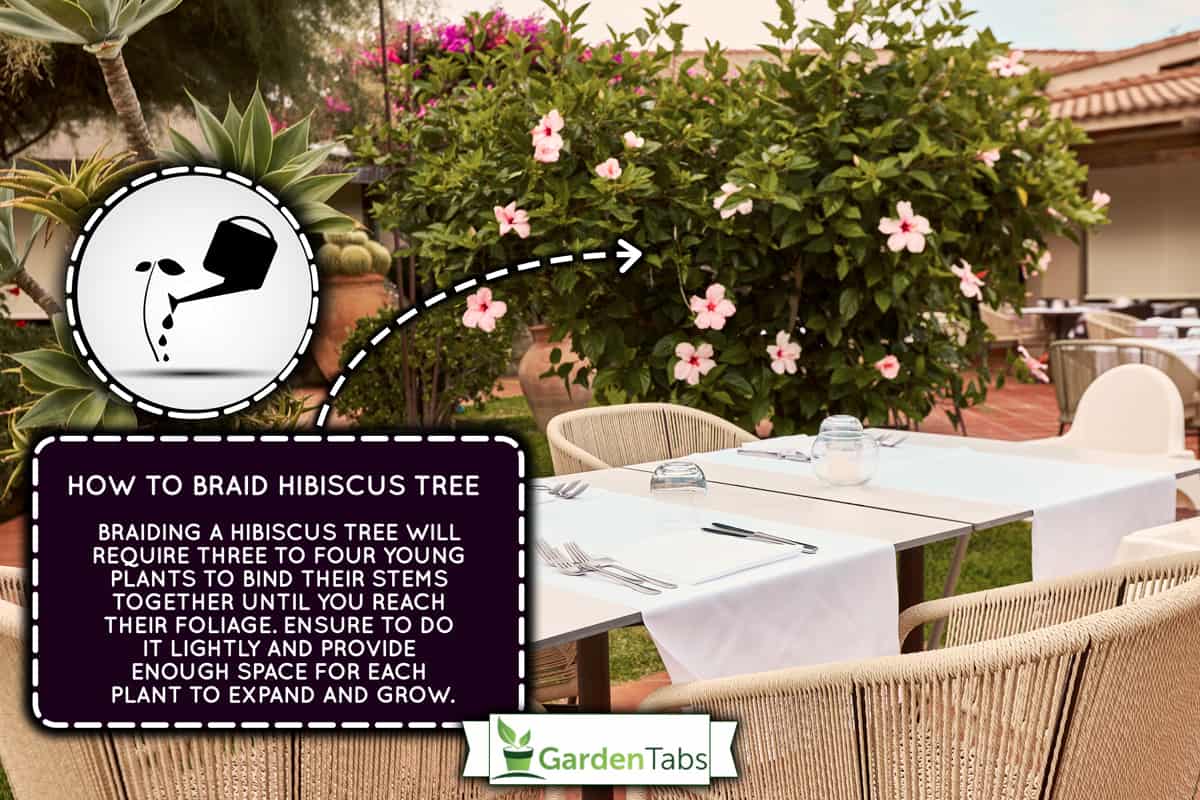
How To Create A Braided Hibiscus Tree
Before you start, you must gather and prepare four young hibiscus trees. Ensure that they are not thicker than a ball-point pen. The hibiscus is typically less than two feet at this stage, with compact yet healthy roots.
You can obtain the hibiscus tree in several ways. You can either purchase it online, get it from a nursery, or obtain it from cuttings that you currently grow.
Bury the roots of all four miniature plants as near together as possible in a wide, deep container, and then simply stack their slim stems over another.
To do the braiding process properly, follow these simple steps:
- Get the two outer stems and lightly twist them together.
- Get the third stem, and twist. And after that, do it also with the fourth stem.
- It is essential to keep going until you have looped all of them and reached the upper foliage.
- Lightly tie them together.
- Lastly, remove any remaining straggly branches until the canopy is smooth and uniform in shape.
Remember that when you are braiding hibiscus, it would be best not to braid them too tightly. And you should allow enough space for your hibiscus tree to expand and grow.
See how a pro braids the stems of hibiscus from propagated cuttings, below:
How To Properly Care For A Hibiscus Tree
Providing all its growth requirements to achieve a healthy hibiscus tree would be most advantageous. Consider the following:
Adequate Sunlight
If you live in a colder climate, we suggest placing your hibiscus tree in an open area since it thrives in bright sunlight. On the other hand, if you reside in a hotter and drier climate, your hibiscus will do better in partial shade.
You'll know that your hibiscus is doing great if it blooms often. Moreover, if it doesn't make buds or flowers, it may benefit from relocating to a spot with more direct sunshine.
Correct Soil Type
We know that hibiscus is a tropical plant. So, it would be best to provide a potting mix that drains well, especially if you plan to plant it in a container. Ensure that the potting mix you will use is particularly for tropical plants.
A well-draining soil can help your hibiscus avoid root rot. Additionally, having a lot of organic matter in your soil is essential if you wish to plant it in the ground.
Read more: "How To Determine Soil Temperature (Even Without A Thermometer)."
Watering Sufficiently
The only way to ensure the health and flowering of a tropical hibiscus plant is to provide it with a constant water supply.
You might need to water your hibiscus plants up to twice daily in arid conditions. Observe the temperature, humidity, and wind before you water them. Moreover, one to two inches of water each week is ideal for tropical hibiscus trees.
Observing Humidity And Temperature
The ideal range of temperatures for the tropical hibiscus plant is 65 to 77 degrees Fahrenheit.
Suppose you want your hibiscus tree to survive the winter season. It would be best to bring it indoors. Take note that even a couple of nights below 50 degrees Fahrenheit can be fatal. So, we suggest you observe the temperature and keep an eye on your hibiscus trees.
Feeding Adequate Fertilizer
The soil probably already has a slow-release fertilizer if you purchase a potted hibiscus plant. It is good since you won't have to give it extra food for at least a few months.
After that, it would be best to incorporate a diluted fish emulsion fertilizer. Such fertilizer will ensure that your hibiscus tree will bloom beautifully. Please refer to the label on the product for the correct usage amount.
Click here to see this fish emulsion fertilizer on Amazon.
What Are The Problems That Hibiscus Encounter
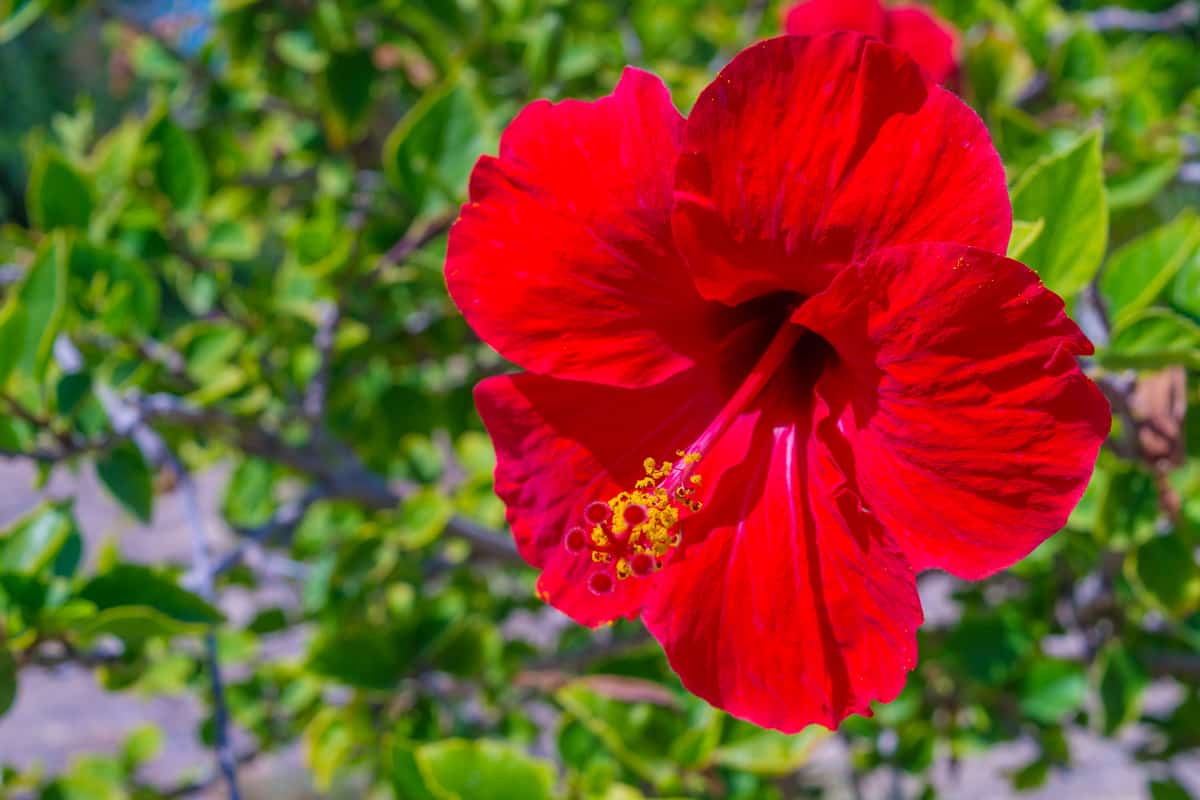
Like other plants, hibiscus can also experience some problems with its growth. We will give you two typical problems that you should keep an eye out for below:
Leaves Turning Yellow
If there is yellowing happening in the upper leaves of your hibiscus, it is probably because of a lack of water. On the other hand, if this occurs in the lower leaves of your plant, it may be because of overwatering or lack of fertilizer.
Dropping Leaves
If you notice that your hibiscus tree is having problems with its leaves, seems stressed, and lacking growth, you must note these reasons:
- The container of your hibiscus tree must be too small, so it would be best to change it to a bigger one
- Your hibiscus might be living in a location that exceeds 85 degrees Fahrenheit for an extended period.
- You may not be watering it adequately
Read more: "Crepe Myrtle Leaves Turning Yellow In Summer – What To Do?"
What Are The Common Pests And Diseases Of Hibiscus Tree
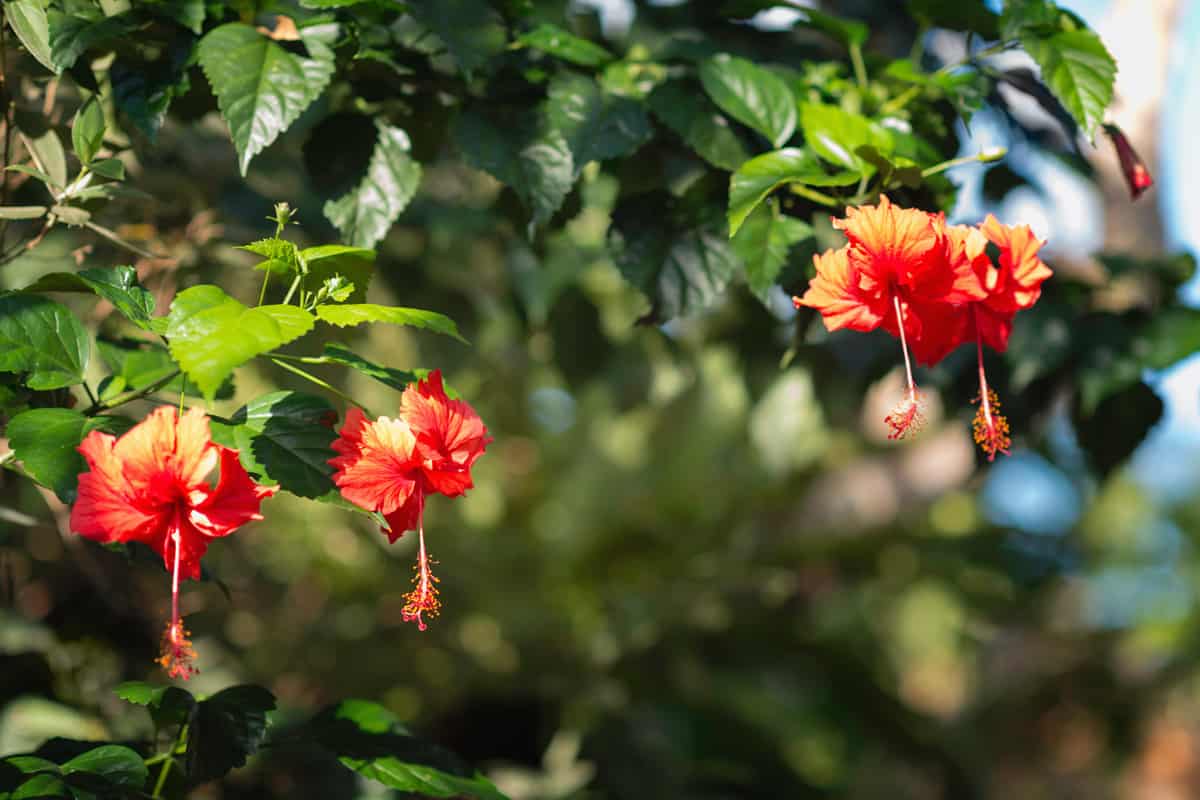
If you keep your hibiscus outdoors, expect that there are pests and diseases affecting it.
The pests that feed from your hibiscus tree are thrips, mealybugs, whiteflies, aphids, and spider mites.
Furthermore, your plant might also experience gray mold, powdery mildew, downy mildew, and root rot if any of the mentioned pests infest them.
How To Treat Pests And Diseases In Hibiscus
The best way to treat pests and diseases is to utilize neem oil. All you need to do is spray your hibiscus tree once every three weeks. Alternatively, you can also use pesticides or fungicides to get rid of them.
How To Propagate Hibiscus Tree
You can grow a new tropical hibiscus plant genetically identical to the original by planting cuttings.
You can start propagating your hibiscus plant by taking soft-stem cuttings in late spring or early summer. We highly suggest this time since it is when the hibiscus has commenced active development for the season.
Please follow the steps below to propagate your hibiscus plant properly:
- Pick out a four to six inches long stem with a slight tinge and remove it using a disinfected knife. After that, detach all the leaves on the lower part.
- Remove the lowermost leaf node from the stem and soak it in the rooting hormone.
- Plant the cutting in a container using a mixture of 50 percent potting soil and 50 percent perlite to ensure proper drainage.
- Dampen the soil and create a hole to plant the cutting.
- Cover the plant with a clear plastic bag, avoiding the foliage. The bag will keep the cutting warm and wet as it begins to root.
- As you wait until the cuttings are actively developing, please don't allow them to bask under full sun. You can only transplant them into a larger container once it reaches this particular stage.
When Is The Best Time To Prune Hibiscus
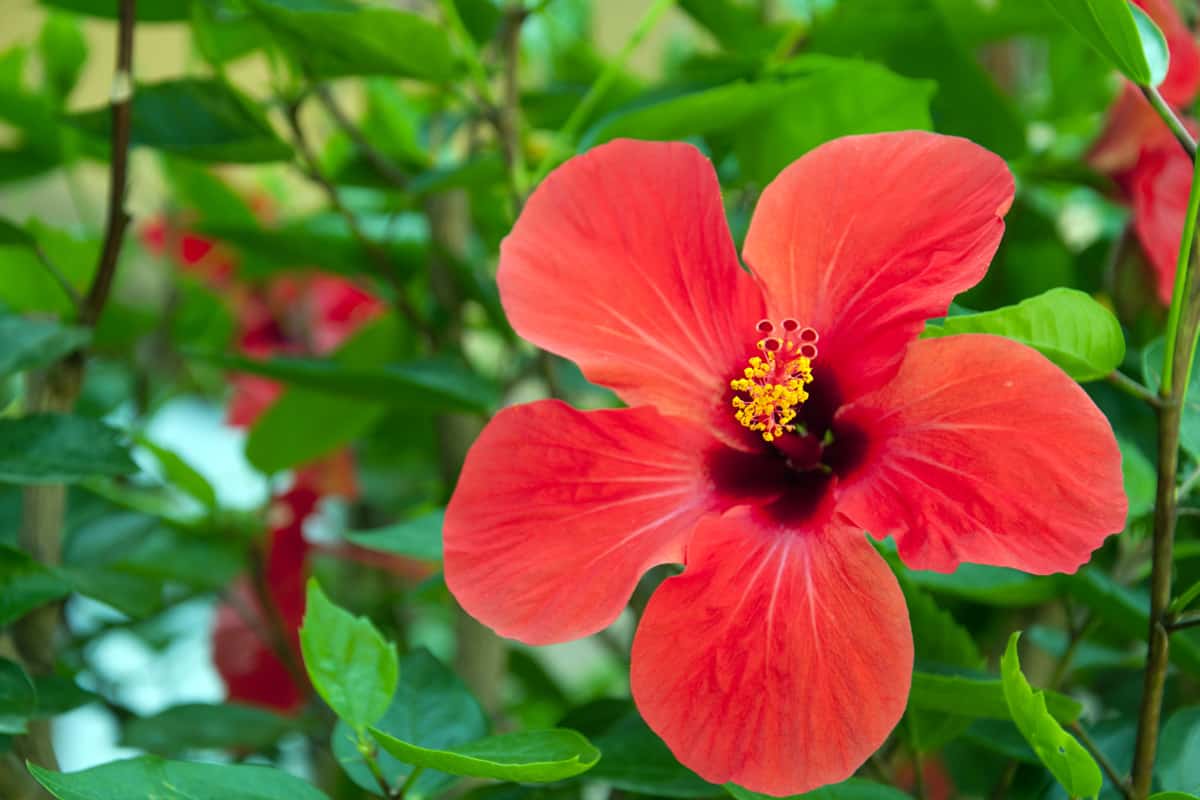
The ideal time to prune your hibiscus tree is conditional on where you reside. If there is no danger of frost, we suggest pruning in the fall. On the other hand, in colder climates, you should only prune them during spring. It is to avoid the risks of frost damage.
By cutting branches that aren't contributing to the plant's structure or growth, you can increase the plant's exposure to light and encourage the blossoming of your tropical hibiscus.
So, before bringing your hibiscus plants indoors for the winter, give them a good pruning.
How To Re-pot Hibiscus Trees
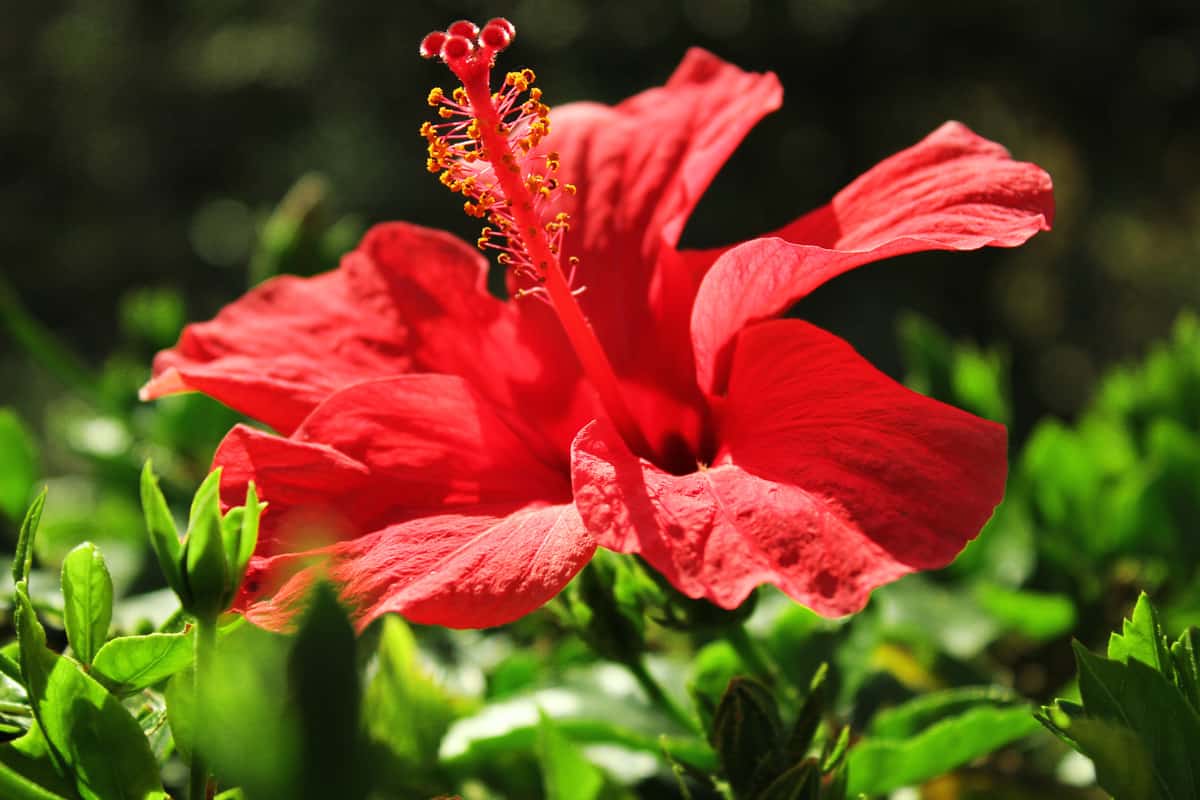
It would be best to re-pot your hibiscus trees every year or two. Doing this will help your plant have soil that can provide adequate nutrients.
You may divert your hibiscus energy to root development if you opt to use a pot that is too deep. If you want to avoid this situation, using a more shallow container would be best, which will also lead to consistent blossoms.
The optimal form for a planter is broad but shallow. Using a pot made of unfired clay with multiple drainage holes is ideal. Moreover, unfired clay containers are porous. It is good since it can allow air and water to reach the hibiscus' roots.
Click here to see this unglazed clay pot on Amazon.
How To Keep Hibiscus Tree Alive During Winter
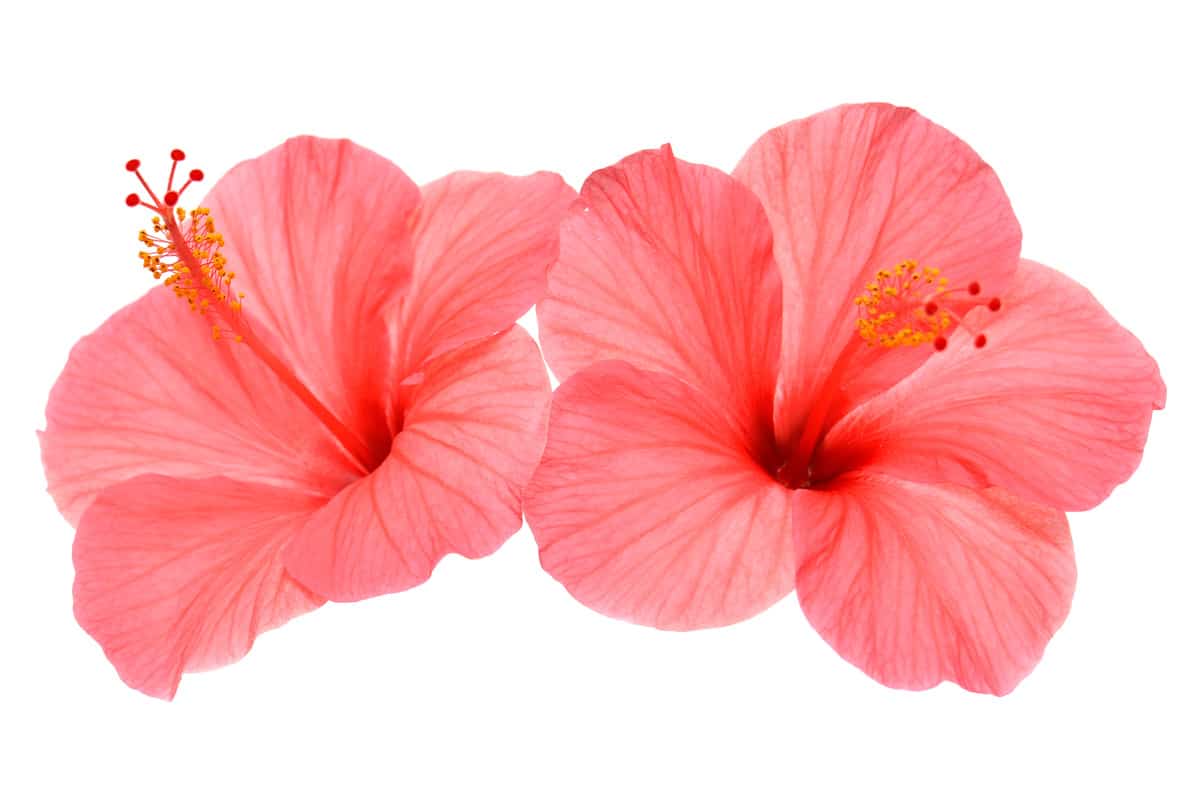
You can bring your hibiscus plants indoors for the winter if you reside in the northern regions. However, you must ensure they receive at least two hours of sunlight daily.
Even though your plant will require less watering during the winter, tropical plants are susceptible to dry interior heat. This happening will require you to shallow-water your hibiscus. Additionally, you have to mist it daily to survive.
Furthermore, if you don't want your hibiscus to waste its energy during winter, it is best to eliminate any buds forming. Lastly, once the evening temperatures are routinely above 55 degrees Fahrenheit in the spring, you can trim the plant back and move it outside.
It's A Wrap!
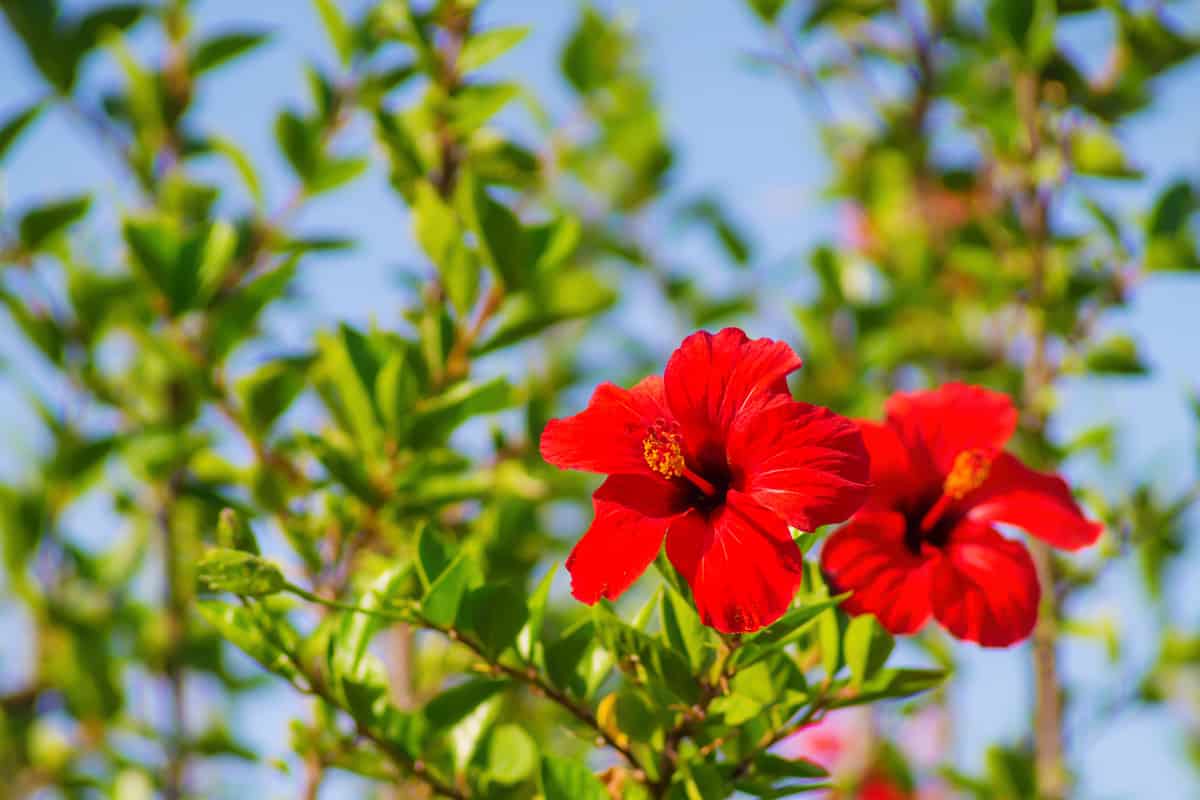
As you can notice in our discussion, braiding hibiscus is not that difficult to perform. All you need to do is to find the perfect timing and follow the proper procedure.
We hope this post answers all your queasiness about hibiscus plants. If you wish to continue reading, feel free to visit our website. You can also leave a comment if you still have additional questions. We'd love to hear from you!


